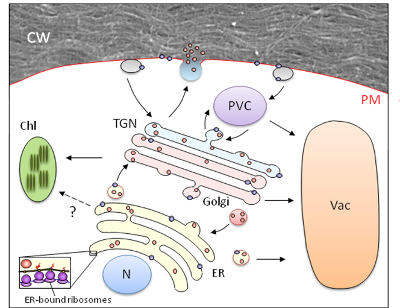
The Endoplasmic Reticulum and Secretory Pathway (The Living Cell)
By the end of this lecture, students should be able to: · Identify endoplasmic reticulum (ER) and Golgi apparatus in electron micrographs. · Describe the structure and function of the endoplasmic reticulum and Golgi apparatus. · Explain the ER-mediated protein synthesis pathway. · Understand the main post-translational modifications to which proteins are subject during their transport through the ER and Golgi complex.
-
What is the structure of the ER (Endoplasmic Reticulum)?
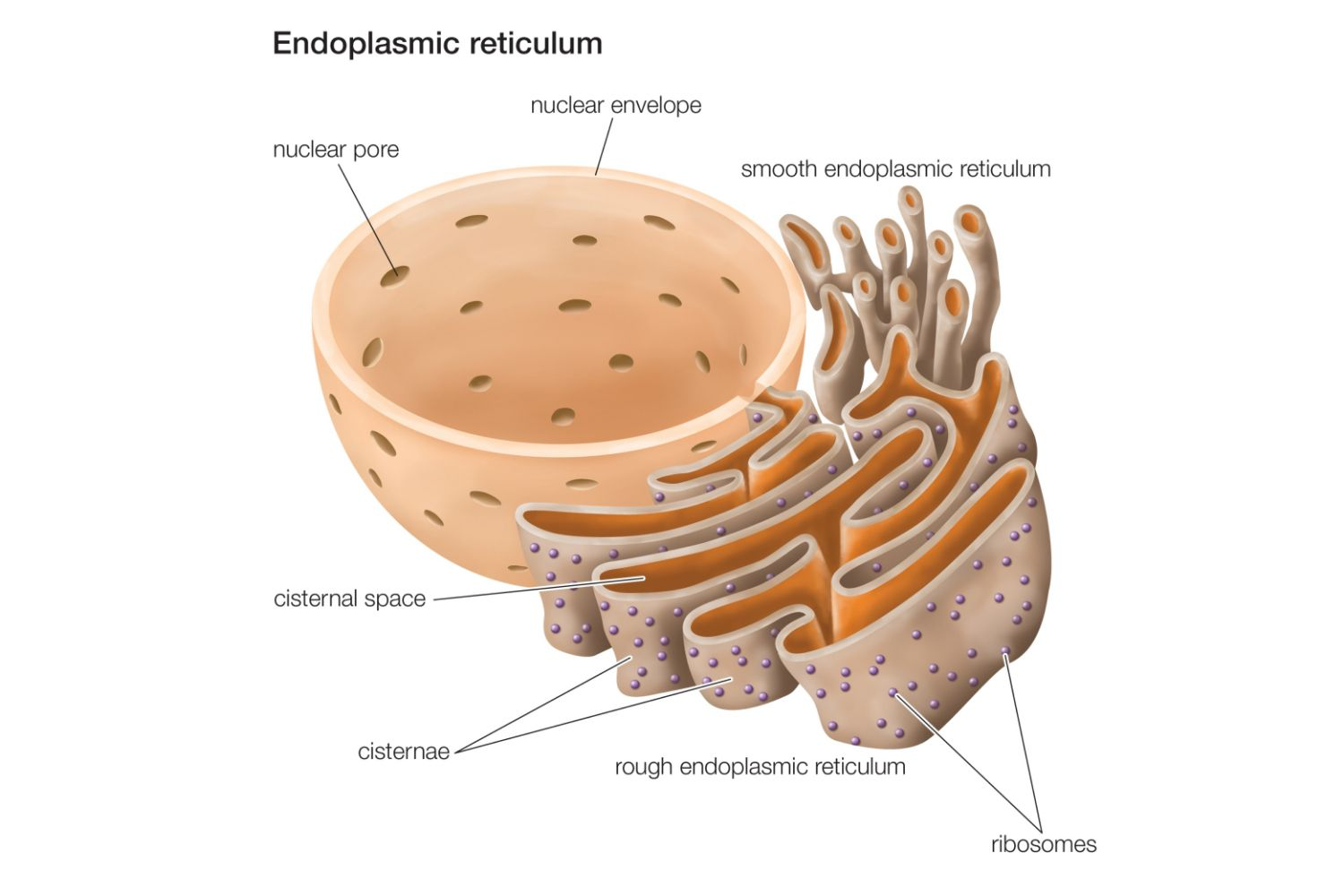
- Single-membrane compartment -continuous network of tubular and flat vesicular structures in the cytoplasm (“little net”).- Space inside is connected with the space between the two membrane surfaces of the nuclear membrane-continuous with the nuclear envelope.- Two parts with different functions: granular/rough ER (ribosomes attached for the translation and folding of new proteins) and agranular/smooth ER (synthesis of lipids and detoxification of certain drugs and toxins by cytochrome P450 enzymes)
-
What are the functions of the ER? (RER) (3)
- Protein synthesis- Glycosylation,
- Folding and assembly to form multi-protein complexes.
-
What are the functions of the ER? (SER) (3)
- Lipid synthesis (cholesterol, phospholipids). - Ca2+ sequestration (isolating something from its usual environment)- Detoxification by cytochrome P450 enzymes.
-
What are the differences between the RER and the SER?
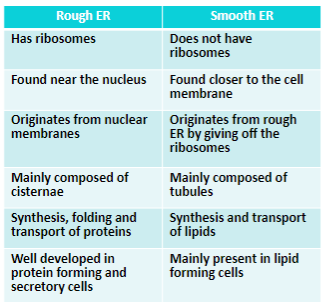
-
Where are newly synthesised lipids targeted to?
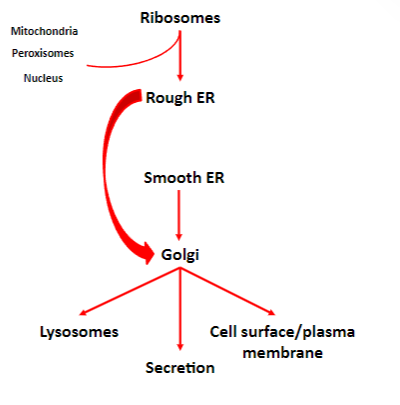
The ER, nucleus, mitochondria or peroxisomes
-
What are signal sequences?
Amino acids at the N-terminal end of the protein that are recognisedby enzyme systems within the cell that transport the protein to the correct destination.
-
Picture demonstrating protein synthesis and modification in both the ribosomes free in the cytosol and membrane bound ribosomes
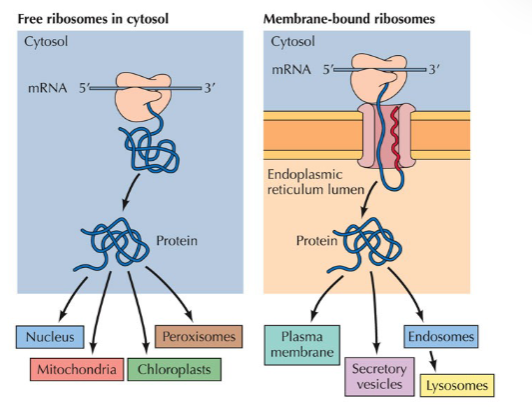
-
What are the four ways that proteins can be modified inside the RER?
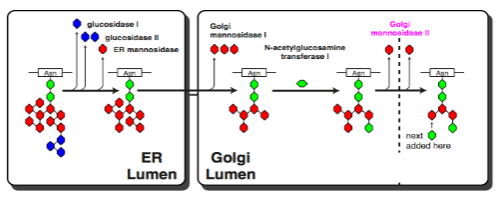
-Proteolysis (Signal Peptide)
-Disulfide bond formation)
-Glycosylation
-Deglycosylation
-
What is proteolysis? (process and purpose)
Proteolysis (Signal Peptide):
Process:
Removal of the signal peptide, a specific sequence at the N-terminal end of a polypeptide.
Typically occurs during or after translocation into the endoplasmic reticulum.
Purpose:
Signal peptide guides the protein to the ER; removal is necessary for the mature protein.
-
What is Disulfide bond formation? (process and purpose)
Disulfide Bond Formation:
Process:
Formation of covalent bonds (disulfide bonds) between cysteine residues in the polypeptide chain.
Facilitated by enzymes in the ER that catalyse the oxidation of cysteine residues.
Purpose:
Contributes to the stabilization and proper folding of the protein structure.
-
What is glycosylation? (process and purpose)
Glycosylation:
Process:
Addition of carbohydrate (sugar) groups to specific amino acid residues, often serine or threonine.
Enzymatic process involving the attachment of sugar moieties (refers to a functional group or a distinctive part of a molecule) to the protein.
Purpose:
Aids in protein folding, stability, and recognition.
Essential for proper targeting and function of glycoproteins.
-
What is deglycosylation? (process and purpose)
Deglycosylation:
Process:
Removal of previously added carbohydrate groups from glycoproteins.
Mediated by enzymes that cleave the glycosidic bonds between sugars and amino acids.
Purpose:
Regulatory process that can modulate protein function.
Necessary for recycling or degradation of certain glycoproteins.
-
What happens to proteins that fail any quality check?
Will not be exported from the ER and are degraded by ubiquitination and the proteasome
-
What does ERAD stand for?
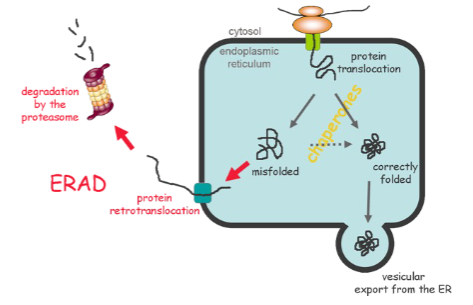
Endoplasmic-Reticulum-Associated protein degradation
-
What is the Structure of the Golgi apparatus?
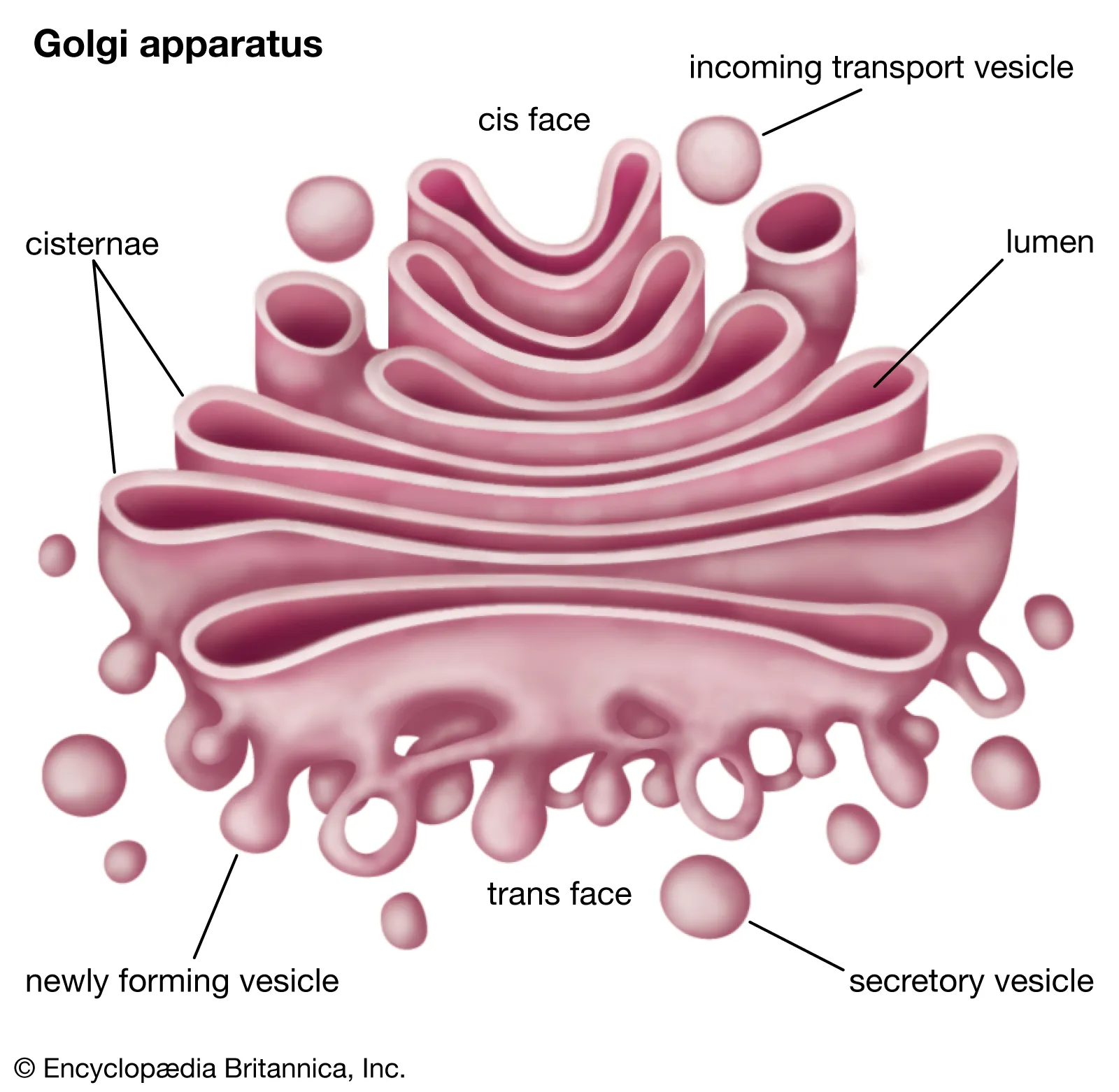
Structure of Golgi Apparatus:
Single-membrane compartment.
Consists of 4 to 8 stacked layers of thin, flat, enclosed vesicles called cisternae.
Cisternae lie near one side of the nucleus.
Compartments within Golgi Apparatus:
Three networks or compartments:
Cis Compartment:
First cisternae structure.
Located closer to the nucleus.
Medial Compartment:
Intermediate structures between cis and trans compartments.
Trans Compartment:
Final structure.
Located closer to the cell membrane.
-
What is the function of the Golgi apparatus? (5)
Protein Modification:
Addition or modification of carbohydrate moieties (refers to a functional group or a distinctive part of a molecule) to proteins.
Lipid Synthesis:
Synthesis of lipids, including sphingomyelin and glucosylceramide.
Protein and Lipid Sorting:
Directs proteins and lipids to specific cellular destinations.
Transport:
Vesicles transport proteins from one cisternae to another in the Golgi apparatus (cis to trans direction).
Maturation of Proteins:
Processes proteins received from the endoplasmic reticulum, modifying them into their mature forms
-
Picture of table outlining the functions of the Golgi apparatus:
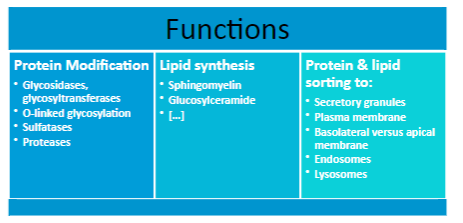
-
Vesicles transport proteins to and from...?(3)
• From the Golgi apparatus to lysosomes, the plasma membrane or theexterior.• From the plasma membrane to lysosomes.• From endosomes to the plasma membrane.
-
How is bud formation facilitated?
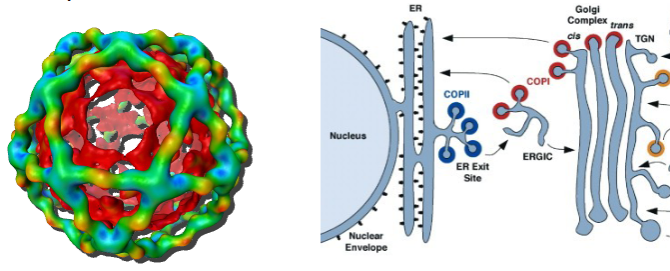
By the binding of different coat proteins (e.g. COPS).
-
What are the COPI and COPII proteins?
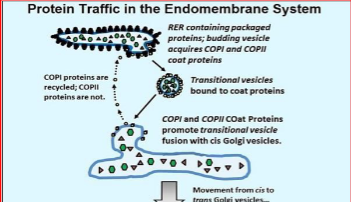
Are coat proteins that help packaged proteins bud off from RER
-
What do v-SNARES and t-SNARES do in the target membrane?
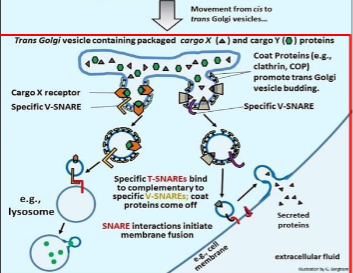
-V-SNARE binds to t-SNARE (target) in the target membrane
-The transport vesicle fuses to the target membrane and the cargo delivered.
-
A summary:
-Endoplasmic reticulum is a single-membrane compartment consisting of two differentiated parts-rough and smooth, which carry out different functions.- The synthesis, modification, folding and transport of the proteins takes place in the rough endoplasmic reticulum (and GA).- Proteins move to the Golgi apparatus-single membrane compartment- in vesicles.- As proteins move through the Golgi apparatus, glycosylation is modified.- Signal sequences direct proteins to ER (remember SRP cycle).- From the Golgi apparatus, proteins are directed in vesicles to the lysosomes or to the cell membrane, or they are secreted

